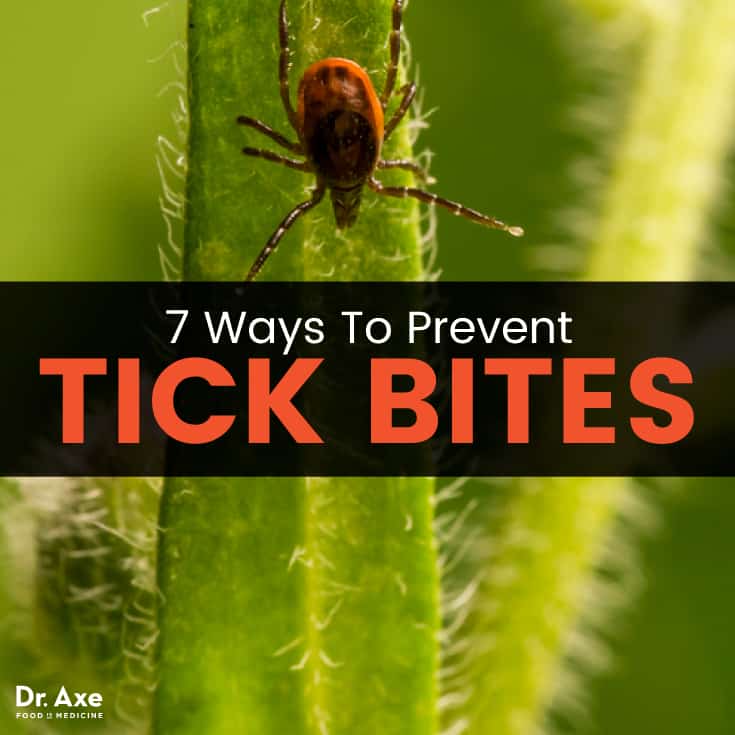
Before you venture outdoors this summer, be sure to protect yourself against ticks. Due to recent unusually warm winters in the U.S., which allowed insects to better survive, tick populations are up — and so is the risk of contracting a nasty tick-borne illness.
In addition to the usual suspects, like Lyme disease, a rarer disease is now causing concern. Over the past 10 years, Powassan virus has infected at least 75 people in the Northeast and Great Lakes region of the U.S. This virus can lead to encephalitis, which causes the brain to swell and results in serious neurologic damage. It can also kill; it’s estimated that about 10–15 percent of people who become infected with the Powassan virus will not survive. (1, 2)
What Is the Powassan Virus?
The Powassan virus got its name in 1958 from a small town in Ontario, Canada where it was identified as the cause of a child’s unspecified encephalitis. Three kinds of ticks carry this virus, but it’s the Ixodes scapularis, or deer tick, that bites humans and spreads the Powassan virus. The deer tick also spreads Lyme disease.
Although rare, the Powassan virus can infect anyone, regardless of age, from infants to the elderly. All it takes is a bite from an infected deer tick. (3) Most cases have occurred in the Northeast and Great Lakes region. (4, 5) However, since 2008, cases have increased farther afield, appearing in Minnesota and Wisconsin. (6)
Some people may not have symptoms as the infection is usually mild. However, if symptoms do occur, they typically appear from about one week to one month after the bite. The Powassan virus can also affect the nervous system and cause encephalitis. Symptoms may include: (7, 8)
- Fever
- Headache
- Vomiting
- Weakness
- Confusion and memory problems
- Difficulty walking and talking
- Seizures
If you or a loved one is experiencing any of these symptoms and were recently bitten by a tick, see a doctor. For severe symptoms, call 911 and get emergency help right away.
There is no set treatment for a Powassan virus infection and no vaccines or medications that can treat or prevent it. If symptoms are severe, intravenous fluids, respiratory support and medications to reduce brain swelling may be given.
About half of Powassan virus survivors experience permanent neurological damage, resulting in headaches, muscle wasting and memory problems. And about 10 percent of encephalitis cases caused by the Powassan virus result in death. (9)
7 Measures You Should Take to Prevent Tick Bites
The best way to protect yourself and your family from the Powassan virus, and other tick-borne illnesses, is to prevent tick bites in the first place. Take these seven measures to help prevent tick bites. (10)
- Stay away from wooded or brushy areas.
- If you do go in the woods, make sure you wear pants and long sleeves.
- Be sure to use insect repellent. The CDC and EPA recommend products that contain chemicals such as DEET, picaridin or IR3535. There are also natural alternatives. You can even make your own homemade bug spray.
- Do a tick check after being outdoors.
- Shower as soon as possible after spending time outdoors.
- Reduce ticks in your yard by mowing the lawn frequently, applying natural pesticides, removing leaves and following other techniques to reduce tick populations.
- Check your pets for ticks. Ask your veterinarian about products to protect your pets from ticks.
How to Remove a Tick (11)
- First, be sure to wear gloves to protect yourself from any pathogens the tick may be carrying.
- Using a pair of tweezers or small forceps, grasp the tick firmly near the skin, but do not crush the tick. Gently pull up to remove the tick. Do not twist or turn the tick as this doesn’t make it easier to remove it plus it may cause the head and mouthparts to break off, which can increase the chance of infection.
- Be sure not to crush the tick because it may release pathogens. You may want to keep it in a tightly closed jar or tape it to a piece of paper in case you need to show it to the doctor. Otherwise, flush it down the toilet or the sink.
- There should be a small crater at the site of the bite where the tick embedded its mouthparts.
- Clean the bite area thoroughly with soap and water or a mild disinfectant. You can also apply antibiotic cream to the area, which may help prevent a local infection but will not prevent you from developing a disease transmitted by the tick. Keep an eye on the affected area and see a doctor immediately if a rash or infection appears.
Read Next: Lyme Disease Natural Treatment
Source: Dr Axe
